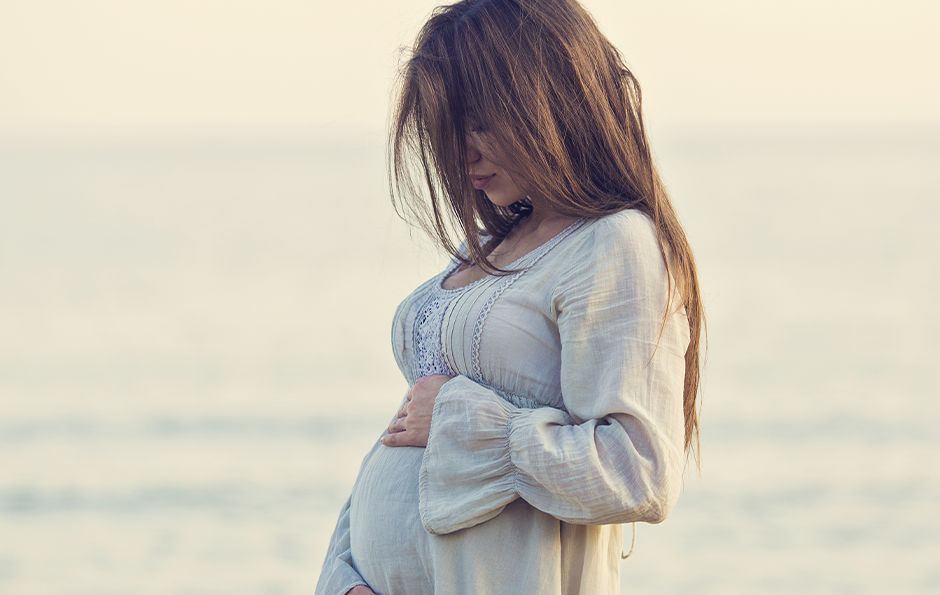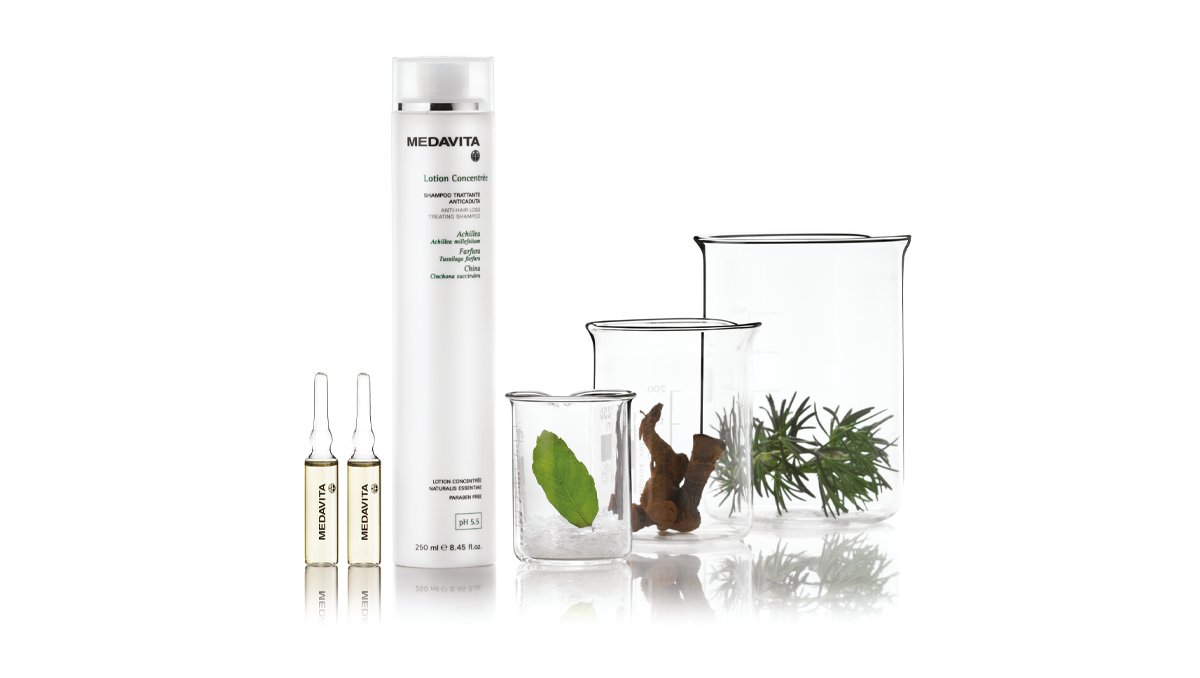 HAIR AND PREGNANCY. WHAT TO DO WHEN YOUR HAIR STARTS TO GO SOUTH. Our fans often write to us saying that after pregnancy and during breastfeeding their hair becomes weak, fragile, dry and thin and they ask us what they can do to restore its vitality. Others ask us if they can dye their hair during pregnancy. So we’ve decided to answer all the doubts future mums have about how to look after their hair while they’re expecting and afterwards. HORMONES AND HAIR. What happens to our hair before and after we give birth? As a general rule, women’s hair tends to look more beautiful and shinier in pregnancy, due to an exponential increase in their levels of the hormone estrogen. This hormone has a positive effect on our hair’s life cycle, prolonging the growth phase (anagen) and reducing the amount we actually shed. The scalp is also well-hydrated, thanks to prostacyclin, a substance produced by the placenta which dilates the blood vessels. Hydration of the tissues stimulates hair growth because it supplies the nutrients it needs to develop. Estrogens also slow down the action of the sebaceous glands which produce sebum. When our skin is not clogged up with grease, the hair bulb has more room to grow bigger and stronger. Grease normally fills the hair follicle, where the bulb is, suffocating it and making it fragile. The combined action of estrogens and prostacyclin therefore makes your hair stronger and more resistant. At the end of your pregnancy and during breastfeeding, the situation is reversed. Estrogen and prostacyclin levels plummet, prolactine increases and the action of androgen hormones is boosted. We experience a real hormonal storm which affects our hair’s phase of life. Hair enters the catagen (gradual interruption of vital functions) and telogen (the hair is ready to fall out) phases. The proper name for this loss of hair during breastfeeding is postpartum effluvium. However it is a temporary condition which, in most cases, goes back to normal within six months or a year. WHAT SHOULD WE DO? Prevent hair loss. During the last month of your pregnancy, it’s a good idea to start an anti-hair loss treatment to pre-empt the possibility of your hair thinning after the birth and during breastfeeding. Make sure you continue with it afterwards and always follow your hairstylist’s advice. Hydrate. The new life growing inside you needs nourishment and hydration. Your whole body is focused on providing this but if you’re not careful, you could become dehydrated. And your hair will follow suit. To prevent it becoming dry and brittle, we recommend adding a nourishing and reconstructing treatment for the hair fibre to your anti-hair loss programme. Combining these two treatments will have great benefits on the scalp, nourishing and strengthening the hair bulb (anti-hair loss treatment Lotion Concentrée), and the lengths, giving them enhanced elasticity and strength (reconstruction treatment B-Refibre). Get a great haircut. Before your due date, towards the seventh or eighth month of your pregnancy, treat yourself to a lovely haircut. It will lift your mood after the birth and when you are completely absorbed by your baby. A neat-looking and easy-to-manage style will boost your spirits and you will feel less stressed.
HAIR AND PREGNANCY. WHAT TO DO WHEN YOUR HAIR STARTS TO GO SOUTH. Our fans often write to us saying that after pregnancy and during breastfeeding their hair becomes weak, fragile, dry and thin and they ask us what they can do to restore its vitality. Others ask us if they can dye their hair during pregnancy. So we’ve decided to answer all the doubts future mums have about how to look after their hair while they’re expecting and afterwards. HORMONES AND HAIR. What happens to our hair before and after we give birth? As a general rule, women’s hair tends to look more beautiful and shinier in pregnancy, due to an exponential increase in their levels of the hormone estrogen. This hormone has a positive effect on our hair’s life cycle, prolonging the growth phase (anagen) and reducing the amount we actually shed. The scalp is also well-hydrated, thanks to prostacyclin, a substance produced by the placenta which dilates the blood vessels. Hydration of the tissues stimulates hair growth because it supplies the nutrients it needs to develop. Estrogens also slow down the action of the sebaceous glands which produce sebum. When our skin is not clogged up with grease, the hair bulb has more room to grow bigger and stronger. Grease normally fills the hair follicle, where the bulb is, suffocating it and making it fragile. The combined action of estrogens and prostacyclin therefore makes your hair stronger and more resistant. At the end of your pregnancy and during breastfeeding, the situation is reversed. Estrogen and prostacyclin levels plummet, prolactine increases and the action of androgen hormones is boosted. We experience a real hormonal storm which affects our hair’s phase of life. Hair enters the catagen (gradual interruption of vital functions) and telogen (the hair is ready to fall out) phases. The proper name for this loss of hair during breastfeeding is postpartum effluvium. However it is a temporary condition which, in most cases, goes back to normal within six months or a year. WHAT SHOULD WE DO? Prevent hair loss. During the last month of your pregnancy, it’s a good idea to start an anti-hair loss treatment to pre-empt the possibility of your hair thinning after the birth and during breastfeeding. Make sure you continue with it afterwards and always follow your hairstylist’s advice. Hydrate. The new life growing inside you needs nourishment and hydration. Your whole body is focused on providing this but if you’re not careful, you could become dehydrated. And your hair will follow suit. To prevent it becoming dry and brittle, we recommend adding a nourishing and reconstructing treatment for the hair fibre to your anti-hair loss programme. Combining these two treatments will have great benefits on the scalp, nourishing and strengthening the hair bulb (anti-hair loss treatment Lotion Concentrée), and the lengths, giving them enhanced elasticity and strength (reconstruction treatment B-Refibre). Get a great haircut. Before your due date, towards the seventh or eighth month of your pregnancy, treat yourself to a lovely haircut. It will lift your mood after the birth and when you are completely absorbed by your baby. A neat-looking and easy-to-manage style will boost your spirits and you will feel less stressed.  DYEING YOUR HAIR. IS IT SAFE DURING PREGNANCY? Many future mums wonder if dyeing their hair during pregnancy is risky for their baby. There are basically two schools of thought: one says it’s better to avoid dyeing your hair, while the other one is in favour of it because nowadays hair dyeing products are not harmful to the foetus. Let’s explain what they mean. Our skin isn’t impermeable and neither is the stratum corneum, the outermost layer which is made up of cells with powerful metabolic activity. As a result, everything we apply to our skin and scalp interacts with our organism. In fact, our skin is often used to deliver substances. Just think of nicotine patches for people who want to stop smoking, contraceptive patches or those which deliver anti-inflammatory drugs. Dyeing your hair is a chemical process which uses ammonia. But what does it actually do? When your hairdresser dyes your hair, first she mixes the colouring cream, which contains ammonia, with the developer in a bowl. As soon as these two substances come into contact with each other, there is a chemical reaction called oxidation which opens the hair’s scales so the pigments and active ingredients can penetrate. This happens thanks to the ammonia in the colouring cream. Once oxidation has occurred, the ammonia evaporates and lets the other active ingredients get to work. Evaporation takes about 10 minutes. This mixture, however, is applied to your hair and scalp. During pregnancy, you can dye your hair 3 or 4 times at the most during the 9 months, so the amount of time the ammonia actually comes into contact with your scalp is actually very limited. If the colour is applied to undamaged skin (as recommended on product labels), systemic absorption is really minimal and will not harm either the future mum or the unborn baby. We do however recommend you don’t dye your hair in the first trimester because these are the most important months when the embryo is formed, and that you reduce the frequency over the following months. If you’re not normally affected by colouring products, remember that during your pregnancy you may become more sensitive to certain cosmetics or intolerant towards certain smells, like ammonia. So be careful because breathing it in can be very unpleasant and difficult to tolerate. It may be a good idea to go for a gentler colouring service with lighter oxidation, namely semi-permanent ammonia-free dyes. Finally, we advise you not to try out DIY hair dyes at home and to always consult your hairdresser so she can carry out a professional assessment of your scalp and use the most appropriate products and treatments.
DYEING YOUR HAIR. IS IT SAFE DURING PREGNANCY? Many future mums wonder if dyeing their hair during pregnancy is risky for their baby. There are basically two schools of thought: one says it’s better to avoid dyeing your hair, while the other one is in favour of it because nowadays hair dyeing products are not harmful to the foetus. Let’s explain what they mean. Our skin isn’t impermeable and neither is the stratum corneum, the outermost layer which is made up of cells with powerful metabolic activity. As a result, everything we apply to our skin and scalp interacts with our organism. In fact, our skin is often used to deliver substances. Just think of nicotine patches for people who want to stop smoking, contraceptive patches or those which deliver anti-inflammatory drugs. Dyeing your hair is a chemical process which uses ammonia. But what does it actually do? When your hairdresser dyes your hair, first she mixes the colouring cream, which contains ammonia, with the developer in a bowl. As soon as these two substances come into contact with each other, there is a chemical reaction called oxidation which opens the hair’s scales so the pigments and active ingredients can penetrate. This happens thanks to the ammonia in the colouring cream. Once oxidation has occurred, the ammonia evaporates and lets the other active ingredients get to work. Evaporation takes about 10 minutes. This mixture, however, is applied to your hair and scalp. During pregnancy, you can dye your hair 3 or 4 times at the most during the 9 months, so the amount of time the ammonia actually comes into contact with your scalp is actually very limited. If the colour is applied to undamaged skin (as recommended on product labels), systemic absorption is really minimal and will not harm either the future mum or the unborn baby. We do however recommend you don’t dye your hair in the first trimester because these are the most important months when the embryo is formed, and that you reduce the frequency over the following months. If you’re not normally affected by colouring products, remember that during your pregnancy you may become more sensitive to certain cosmetics or intolerant towards certain smells, like ammonia. So be careful because breathing it in can be very unpleasant and difficult to tolerate. It may be a good idea to go for a gentler colouring service with lighter oxidation, namely semi-permanent ammonia-free dyes. Finally, we advise you not to try out DIY hair dyes at home and to always consult your hairdresser so she can carry out a professional assessment of your scalp and use the most appropriate products and treatments.
Discover Lotion Concentrée
Medavita Magazine Hair Style and more
- Categories
- News ed eventi
- Hair News
- Promos


Validate your login
Sign In
Registrati a "Medavita Salon Friends" e ricevi vantaggi e promozioni per i servizi in salone.
Create New Account